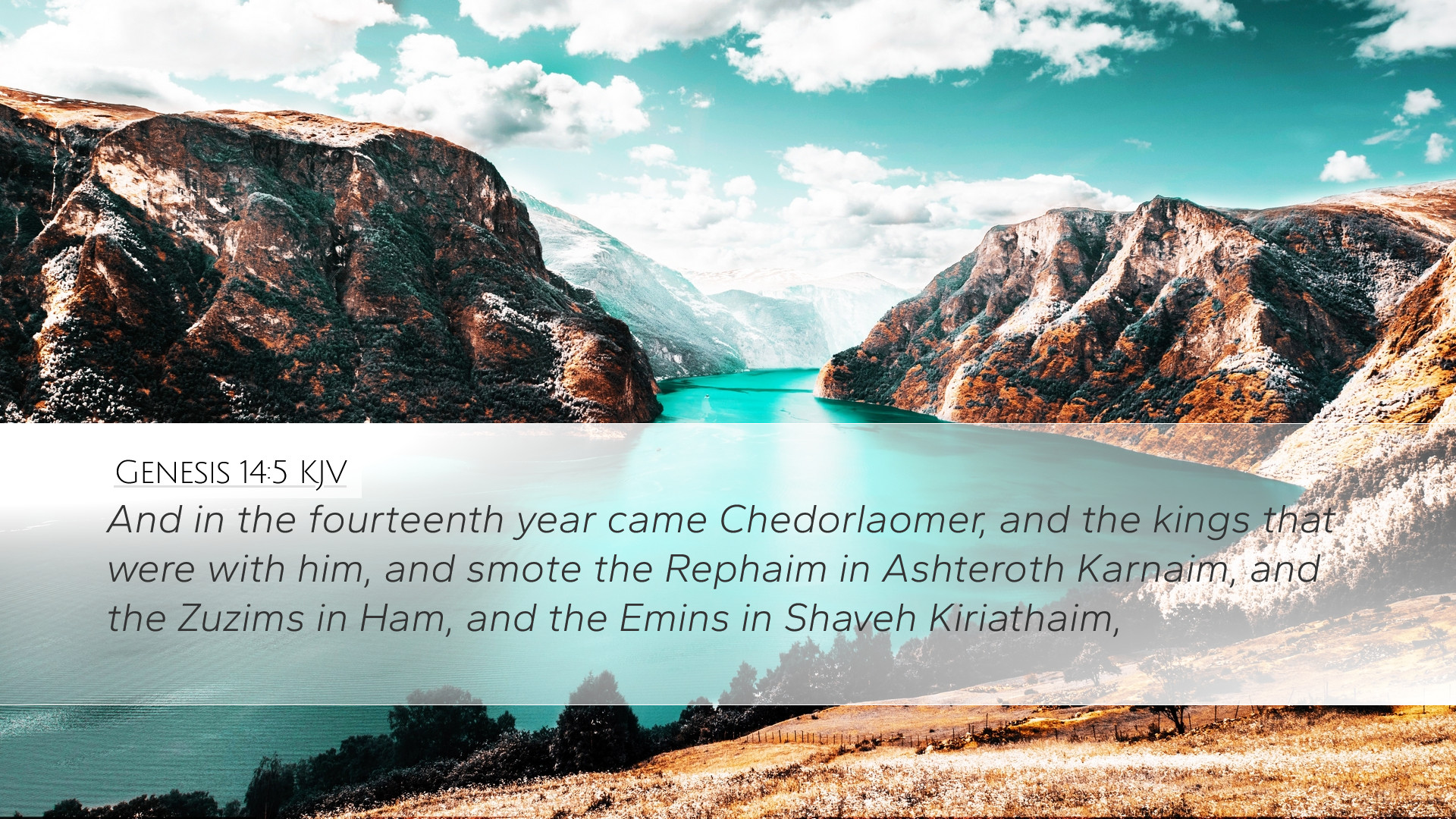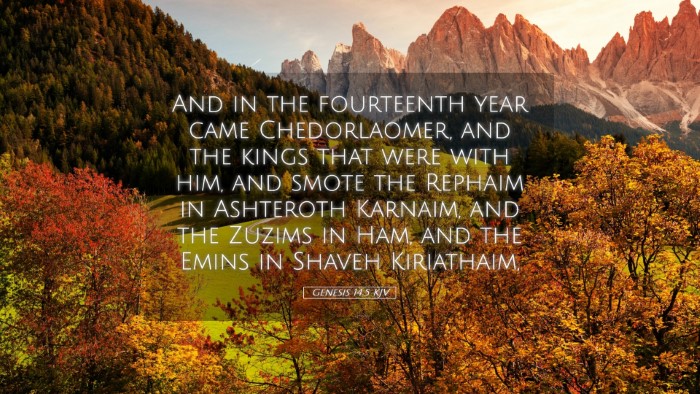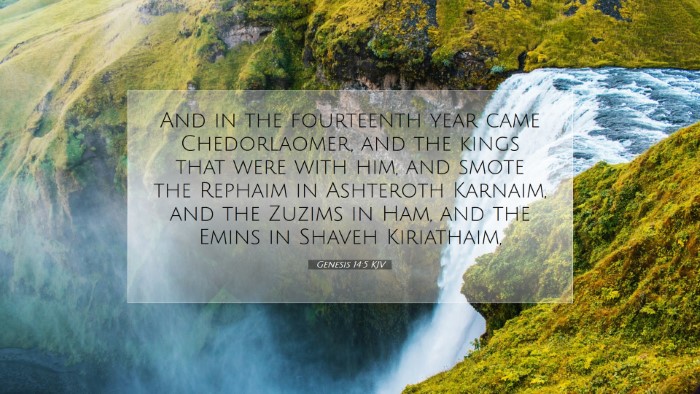Commentary on Genesis 14:5
Genesis 14:5 states: "And in the fourteenth year came Chedorlaomer, and the kings that were with him, and smote the Rephaims in Ashteroth Karnaim, and the Zuzims in Ham, and the Emims in Shaveh Kiriathaim."
Contextual Background
This verse occurs in a narrative that details a conflict among several kings in the region of Canaan during the time of Abram (Abraham). The passage identifies Chedorlaomer, king of Elam, as the leader of a coalition of kings who waged war against a confederation of petty kings. This is important for understanding the geopolitical situation in which Abraham found himself, as it sets the stage for Abram's allied response to rescue his nephew Lot.
Historical Significance
According to Albert Barnes, the names mentioned in this verse reflect the historical presence of various tribes and groups in the region during this time. The Rephaim, Zuzim, and Emim were known to be giants or groups of considerable size, indicative of the formidable challenges faced in these conflicts.
The Kings of the East
Matthew Henry notes that Chedorlaomer's invasion is emblematic of the struggles for dominance in the ancient Near East, revealing the tensions between powerful kingdoms and smaller city-states.
- Rephaim: This tribe is often associated with giants. Their defeat symbolizes the subjugation of mighty foes.
- Zuzim: Some sources interpret this group as also being a race of giants, referencing the broader theme of the conflicts faced by the Israelites later recorded in the Pentateuch.
- Emim: Often characterized as fearsome warriors, their presence underlines the seriousness of the conflict.
The Theological Implications
The conflict presented in this passage invites readers to reflect on broader themes of power, authority, and divine intervention. Adam Clarke suggests that, amid this turbulent scene, God's purpose unfolds through the chosen lineage of Abram, indicating that divine providence is at work even in human conflicts.
God's Sovereignty
This narrative not only highlights human strife but also reveals God’s sovereign plan for the lineage of Abraham, which will ultimately lead to the nation of Israel. It accentuates the belief that God uses even the chaos of war to fulfill His purposes.
Application for the Faith Community
Understanding this passage is essential for preachers and theologians aiming to reveal the character of God amidst human conflicts. Matthew Henry can assist pastors in drawing parallels between the ancient struggles depicted in Genesis 14 and contemporary conflicts, emphasizing God's order in chaos.
Key Lessons
- God's Plans Prevail: No matter the ensuing chaos caused by worldly powers, God's ultimate plan remains constant.
- The Strength of Alliances: Abram later allies with others to confront Chedorlaomer. Together, they symbolize unity against oppression.
- The Call to Action: Just as Abram acted in faith, the church is called to respond to injustice and oppression in its own contexts.
Conclusion
Genesis 14:5 reveals not just a historical moment but also speaks to timeless truths about human conflict, divine sovereignty, and the unfolding of God’s redemptive plan. As leaders in the faith community study this passage, may they recognize their roles in God's ongoing narrative, advocating for justice and living out God’s will as they navigate the complexities of their own contexts.


